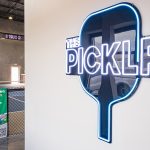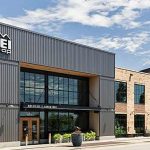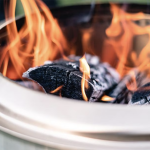Timberland is still dealing with the fall-out from a declining yellow boot business, and working hard to return the segment to the levels it experienced in its heyday. While this shortfall in the urban market is impacting both top and bottom line results, the declining volume is also masking gains the company is making in the international, apparel, casual, outdoor, and industrial markets.
Timberland management said that the softening urban business was the result of a variety of factors including fashion changes moving towards lower-priced fashion footwear and mixed response to Timberlands new urban market product releases. In response, Timberland is taking aggressive steps to better balance inventory levels at retail, including a proactive product return program with independent accounts and reduced sell-in levels, which pressured TBLs second-quarter financial results.
Outside of the urban market, Timberland is actually seeing healthy growth. Global apparel and accessory sales are up in the 20% range thanks to a combination of organic growth in the Timberland brand and the addition of SmartWool to the companys portfolio. During a conference call with analysts, Timberland management seemed quite pleased with the performance of SmartWool so far. Sales of the brands sock and apparel products were said to be increasing in the double-digits compared to the prior year.
Industrial footwear sales were also said to be performing well, largely due to Timberland PRO, which delivered very strong growth again this quarter supported by expansion of the Titan series as well as non-core and new product offerings.
Outdoor sales were driven by Timberlands Cadion line of footwear. In addition, the co-branded Timberland/SmartWool footwear is allowing the company to open new accounts like Athleta, Christy Sports, and Summit Hut in the U.S. and Cotswold Outdoor and Intersport in Europe.
Timberlands new watersports footwear brand, Mion, was in over 200 sports specialty retailers and independent doors this spring. Timberland management said they are seeing positive consumer and trade response to the product and its environmentally aware approach. Plans are also moving ahead with the new GoLite footwear line, which will be officially launched in August.
Timberland management is now targeting relatively flat revenue growth in the third quarter with gross margin declines in the 400 basis points range. For the fourth quarter, the company is targeting high-single-digit revenue growth and more moderate gross margin pressures in the range of a 100 basis point decline.
This outlook includes estimated impacts from the implementation of anti-dumping duties previously announced by the European Commission. These duties will lower profits in the range of $7 million to $8 million in 2006.
Timberland continues to target flat to low-single-digit revenue growth for the full year and expects declines in comparable EPS performance in the 25% range. This would bring EPS to roughly $1.76, which is at the lower end of its previously stated profit range. EPS would have been approximately $2.35 for 2005 after excluding restructuring and related costs and including costs related to stock options and its employee stock purchase plan.
| The Timberland Company | |||
| Second Quarter Results | |||
| (in $ millions) | 2006 | 2005 | Change |
| Total Sales | $226.6 | $240.3 | -5.7% |
| U.S. Direct | $33.2 | $35.0 | -5.0% |
| U.S. Wholesale | $87.4 | $100.5 | -13.0% |
| Intl Direct | $37.3 | $36.5 | 2.2% |
| Intl Wholesale | $68.6 | $68.3 | 0.5% |
| Total Footwear | $150.8 | $177.6 | -15.1% |
| Total App./Acc. | $71.5 | $59.6 | 20.0% |
| Gross Margins | 45.4% | 49.1% | -370 bps |
| SG&A Expenses | 54.4% | 45.6% | +880 bps |
| Net Income | ($13.0) | $6.3 | vs. profit |
| Diluted EPS | (21¢) | 9¢ | vs. profit |
| Inventories* | $211.0 | $216.5 | -2.5% |
| Accts Rec.* | $125.7 | $130.6 | -3.8% |
| US Retail Comps | -6.6% | +1.3% | |
| * at quarter end | |||












